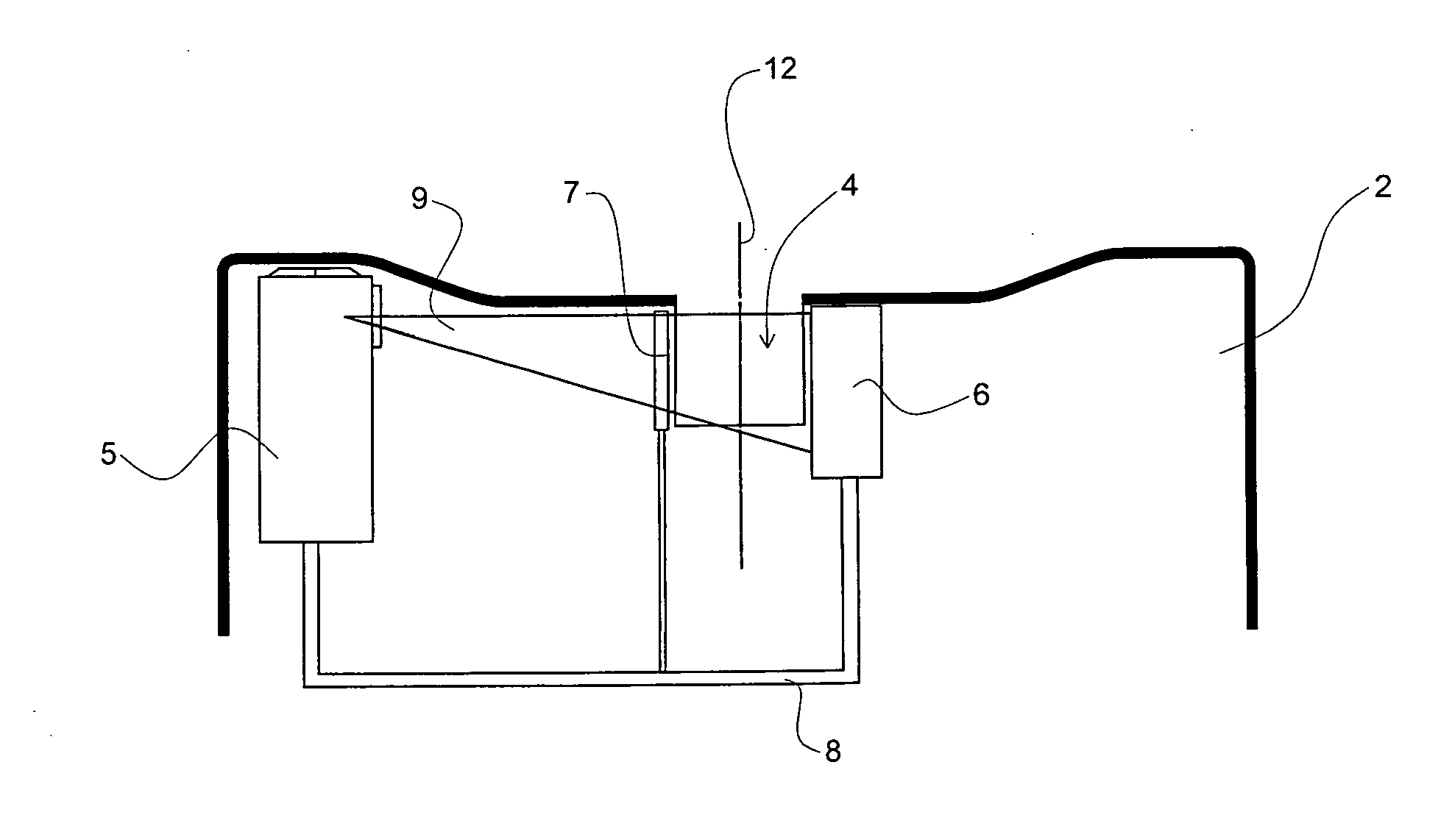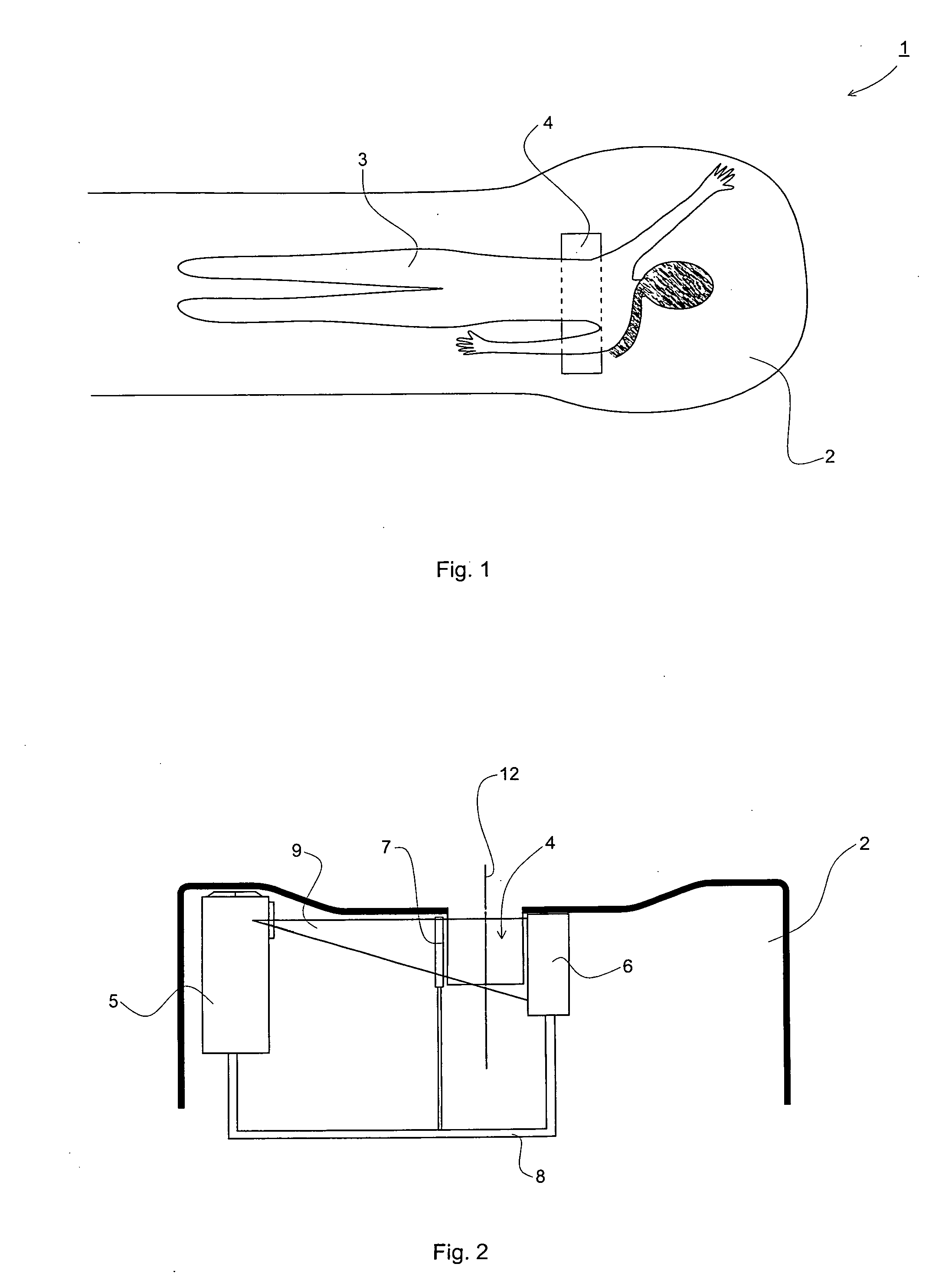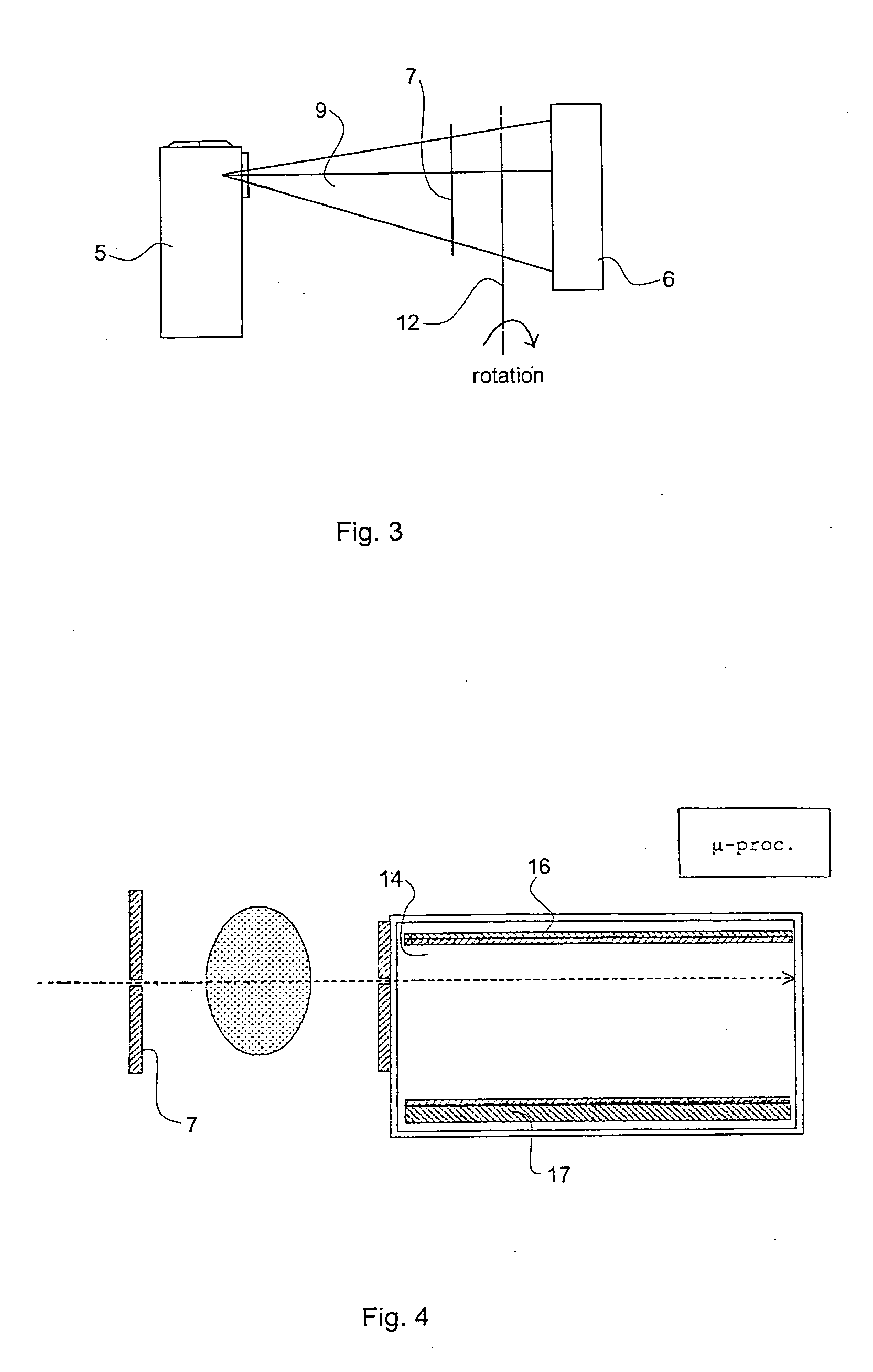Imaging arrangement and system for imaging
a computed tomography and imaging arrangement technology, applied in the field of cone beam computed tomography scanning, can solve the problems of slow reading out, tft-panels have a number of limitations when it comes to cone beam ct imaging, and the detection technology cannot be used to implement wide detectors
- Summary
- Abstract
- Description
- Claims
- Application Information
AI Technical Summary
Benefits of technology
Problems solved by technology
Method used
Image
Examples
Embodiment Construction
[0029]In the following the present invention is described and exemplified by means of a particular medical application, namely mammography. The invention is however applicable in other areas as well, with suitable modifications.
[0030]Mammography is an example of an important application of medical imaging. In a mammography procedure of today the breast of the patient is compressed between two compression plates and the X-ray source is activated and the X-ray detector captures a 2D image of the breast. The compression of the breast is most uncomfortable to the patient. Further, it is important that the image quality is high, since breast cancer can, for example, be missed by being obscured by radiographically dense, fibrograndular breast tissue. There are thus a number of drawbacks related to the field of mammography. These drawbacks, among others, are overcome by means of the present invention.
[0031]FIG. 1 illustrates schematically the present invention in a mammography application....
PUM
 Login to View More
Login to View More Abstract
Description
Claims
Application Information
 Login to View More
Login to View More - R&D
- Intellectual Property
- Life Sciences
- Materials
- Tech Scout
- Unparalleled Data Quality
- Higher Quality Content
- 60% Fewer Hallucinations
Browse by: Latest US Patents, China's latest patents, Technical Efficacy Thesaurus, Application Domain, Technology Topic, Popular Technical Reports.
© 2025 PatSnap. All rights reserved.Legal|Privacy policy|Modern Slavery Act Transparency Statement|Sitemap|About US| Contact US: help@patsnap.com



